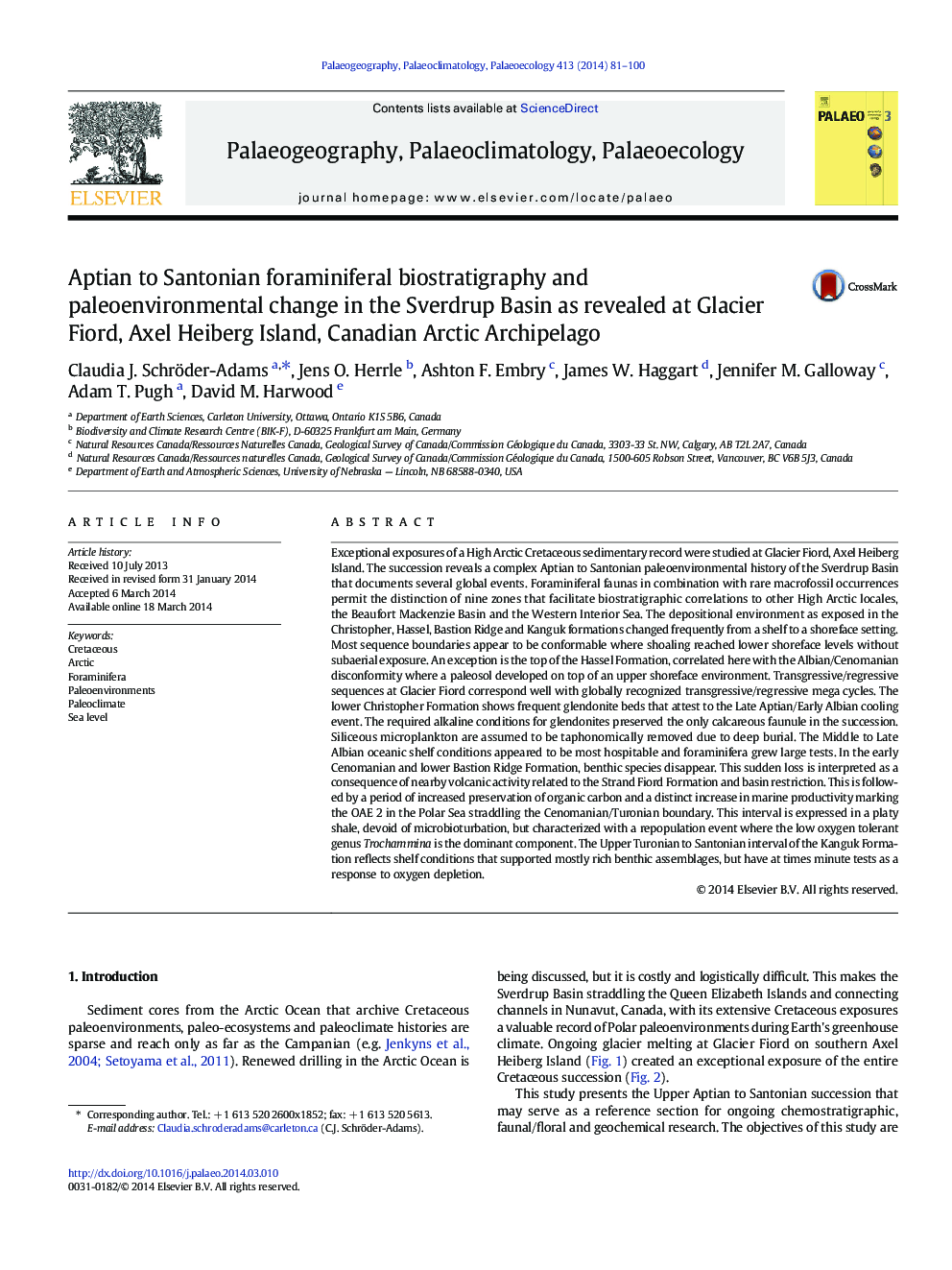| کد مقاله | کد نشریه | سال انتشار | مقاله انگلیسی | نسخه تمام متن |
|---|---|---|---|---|
| 4466147 | 1622177 | 2014 | 20 صفحه PDF | دانلود رایگان |

• We document Cretaceous global paleoclimate signals in the Sverdrup Basin.
• We provide a detailed Cretaceous reference section for the Canadian Polar Region.
• Global transgressive/regressive cycles influenced the Cretaceous Sverdrup Basin.
• We provide a refined High Arctic Cretaceous biostratigraphic framework.
Exceptional exposures of a High Arctic Cretaceous sedimentary record were studied at Glacier Fiord, Axel Heiberg Island. The succession reveals a complex Aptian to Santonian paleoenvironmental history of the Sverdrup Basin that documents several global events. Foraminiferal faunas in combination with rare macrofossil occurrences permit the distinction of nine zones that facilitate biostratigraphic correlations to other High Arctic locales, the Beaufort Mackenzie Basin and the Western Interior Sea. The depositional environment as exposed in the Christopher, Hassel, Bastion Ridge and Kanguk formations changed frequently from a shelf to a shoreface setting. Most sequence boundaries appear to be conformable where shoaling reached lower shoreface levels without subaerial exposure. An exception is the top of the Hassel Formation, correlated here with the Albian/Cenomanian disconformity where a paleosol developed on top of an upper shoreface environment. Transgressive/regressive sequences at Glacier Fiord correspond well with globally recognized transgressive/regressive mega cycles. The lower Christopher Formation shows frequent glendonite beds that attest to the Late Aptian/Early Albian cooling event. The required alkaline conditions for glendonites preserved the only calcareous faunule in the succession. Siliceous microplankton are assumed to be taphonomically removed due to deep burial. The Middle to Late Albian oceanic shelf conditions appeared to be most hospitable and foraminifera grew large tests. In the early Cenomanian and lower Bastion Ridge Formation, benthic species disappear. This sudden loss is interpreted as a consequence of nearby volcanic activity related to the Strand Fiord Formation and basin restriction. This is followed by a period of increased preservation of organic carbon and a distinct increase in marine productivity marking the OAE 2 in the Polar Sea straddling the Cenomanian/Turonian boundary. This interval is expressed in a platy shale, devoid of microbioturbation, but characterized with a repopulation event where the low oxygen tolerant genus Trochammina is the dominant component. The Upper Turonian to Santonian interval of the Kanguk Formation reflects shelf conditions that supported mostly rich benthic assemblages, but have at times minute tests as a response to oxygen depletion.
Journal: Palaeogeography, Palaeoclimatology, Palaeoecology - Volume 413, 1 November 2014, Pages 81–100